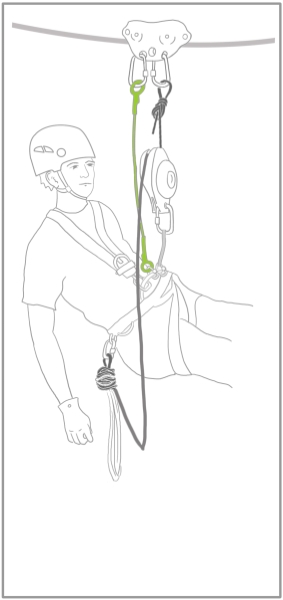Where are the Murphys - Incident Log Report
Strangulation of participant’s head in backup sling when self-lowering from a bungee-break zipline1) Connecting to the zipline and self-lowering at the end of the ride (procedure of the ropes course site in question)Participants on this zipline (bungee break) are connected with two independent pieces of equipment to the zipline trolley (see picture right top):
2) Reported ProblemIn the reported case, the round sling was removed from the harness, as described above, but caught the participant's chin during rapelling. This was noticed by neither participant nor staff. As a result of the lowering process, the round sling got tightened around the neck and under the chin (see picture right middle). When the entrapment became obvious, staff members released the brake system (for bringing the participant closer to ground level) and then lifted the participant in order to unload the round sling, using a ladder. Then they took over control of the lowering procedure. Additional staff members and available equipment (ladder) helped to solve the situation. Paramedics were alerted and transported the participant to hospital where it was determined that no injuries occurred. 3) Rescue Procedures in place
4) Reflection
|
  
|





